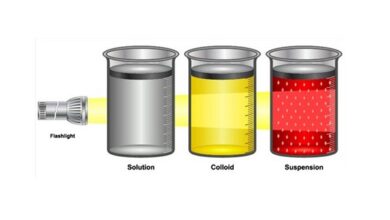What is Mesozoic Era Features and Geological Time Scale
Mesozoic Era
The Mesozoic Era is also called the Age of Dinosaurs and lasted between 250 million to 65 million years ago. It is divided into three periods: Triassic, Jurassic and Cretaceous. The “Permo-Triassic extinction” event saw the greatest extinction on Earth, wiping out 95% of all marine life and 70% of life on the planet.
At the beginning of the Mesozoic Era, the continents as we know them today were united in a continental mass called Pangea. The continent of Pangea was divided into Laurasia in the north and Gondwana in the south.
Laurasia was later divided into the continents of North America and Eurasia, while Gondwana into South America, Africa, Australia, Antarctica and the subcontinent of India, which after the Mesozoic Era collided with Eurasia, forming the Himalayas.
Features of the Mesozoic Era
- Age of dinosaurs;
- Hot and arid climate;
- Reptiles such as turtles, pterosaurs, lizards and snakes appear;
- The first mammals appear;
- Increases the variety of molluscs, shellfish and snails;
- Sharks, bony fish and marine reptiles appear;
- Insects such as flies, butterflies and bees appear;
- Alteration of the flora, from Gymnosperms to Angiosperms;
- Extinction of dinosaurs.
Triassic Period of Mesozoic Era
The Triassic Period lasted between 250 and 203 million years and marks the beginning of the Mesozoic Era. Between the passage of the Permian period, in the Paleozoic Era, to the Triassic Period, the extinction of most of the Earth’s animals occurred, with corals, echinoderms, molluscs and other invertebrates being decimated.
The vegetation of that period consisted of conifers, gymcophytes and cycads, representatives of the Gymnosperms group. In addition to Pteridophytes, such as tree ferns and horsetails.
Between the middle and the end of the Triassic, herbivorous dinosaurs appear, which were no bigger than turkeys. These animals, however, became bigger, faster and more ferocious, which impelled them to hunt smaller species.
The first flying reptiles (pterosaurs), chelonians (turtles, tortoises and tortoises), crocodiles and marine reptiles (Ichthyosaurs and Plesiosaurs) appear. It is also in the Triassic that the first mammals appear.
Jurassic Period
The Jurassic Period lasted between 203 and 135 million years ago. Huge herbivorous dinosaurs called sauropods dominate the earth’s surface and fed on Gymnosperm plants. Sauropods, however, were prey to so-called tetrapods, which included Ceratosaurus, Megalosaurus, and Allosaurus.
In the so-called Late Jurassic, marine reptiles were common, as well as fish. There were also ichthyosaurs, plesiosaurs, echinoids, starfish and sponges among the invertebrates. During this period, lizards, amphibians and the oldest bird species, Archeopteryx, appeared.
Cretaceous period
The Cretaceous Period is comprised between 135 million and 65 million years ago. Among the main features of this period is the emergence of rays, modern sharks, some herbivorous dinosaurs such as duck-billed dinosaurs and horned dinosaurs.
Dinosaurs included Tyrannosaurus Rex, Triceratops, Velociraptor and Spinosaurus. New birds and mammals with complex molars appeared, as well as members of the Monotremata, Marsupialia , and Eutheria groups.
There was a great modification of the flora in this period. Angiosperms, flowering plants, spread across the regions of the planet, but predominated near the Equator. The Angiosperms found in this Period were mainly small trees, shrubs and grasses.
It is a period of insect diversification, the emergence of ants, termites and butterflies. Aphids, grasshoppers and wasps appear.
The Cretaceous is also marked by the emergence of bees, which would contribute to the processes of pollination and dispersal of flowering plants.
The Cretaceous Period ends with the extinction of half of Earth’s life and non-avian animals. Among the accepted theories for the cause of the extinction is the impact of a celestial body on the Yucatan Peninsula in Mexico.
Geological Time Scale
Earth’s history can be divided into Aeons, Eras, Periods, Epochs, and Ages.
| eon | It was | Period | Era | Age
(millions of years) |
|---|---|---|---|---|
| Phanerozoic | Cenozoic | Quaternary | Holocene | Beginning:
2.6 Ma |
| Pleistocene | ||||
| Neogene | Pliocene | Beginning:
23 Ma |
||
| Miocene | ||||
| paleogene | Oligocene | Beginning:
65 Ma |
||
| Eocene | ||||
| Paleocene | ||||
| Mesozoic | Cretaceous | Beginning:
250 Ma |
||
| Jurassic | ||||
| Triassic | ||||
| Paleozoic | Permian | Beginning:
542 Ma |
||
| Carboniferous | ||||
| Devonian | ||||
| Silurian | ||||
| Ordovician | ||||
| Cambrian | ||||
| Proterozoic | Neoproterozoic | Ediacaran | Beginning:
1000 Ma |
|
| Cryogenic | ||||
| Tonian | ||||
| Mesoproterozoic | Stenian | Beginning:
1600 Ma |
||
| Ectasian | ||||
| Calymmian | ||||
| Paleoproterozoic | Statherian | Beginning:
2500 Ma |
||
| Orosirian | ||||
| Rhyacian | ||||
| Siderian | ||||
| Archean | Neoarchean | Beginning:
2800 Ma |
||
| Mesoarchean | Beginning:
3200 Ma |
|||
| Paleoarchean | Beginning:
3600 Ma |
|||
| Eoarchean | Beginning:
4000 Ma |
|||
| Hadean | Beginning:
4600 Ma |
|||



